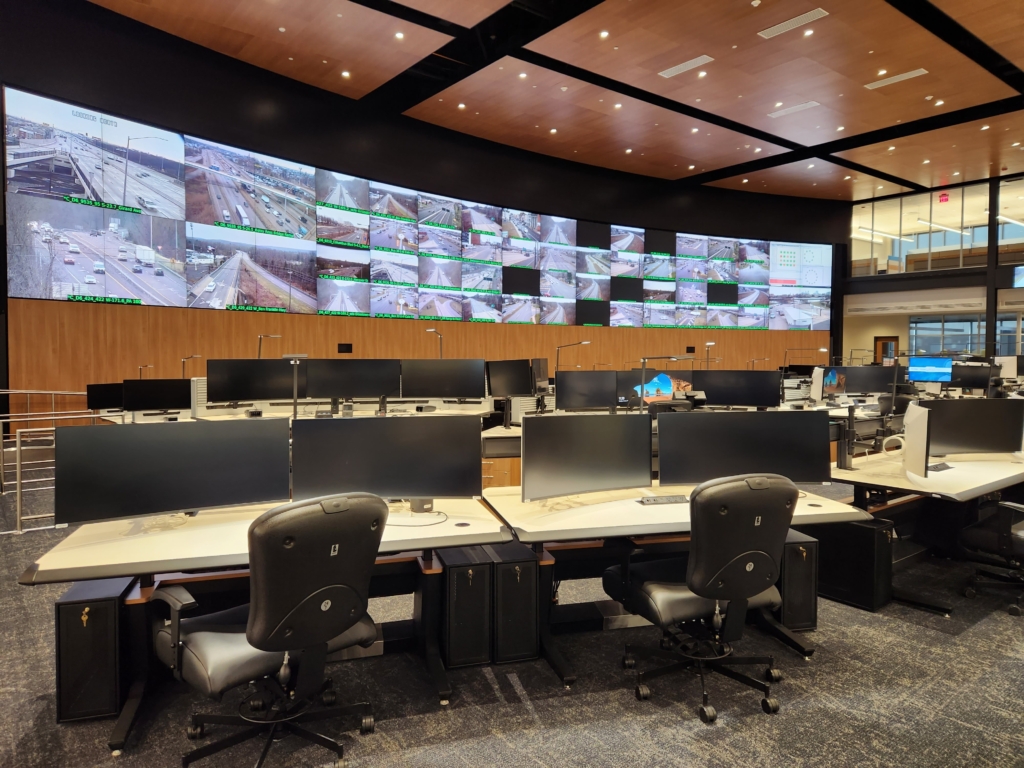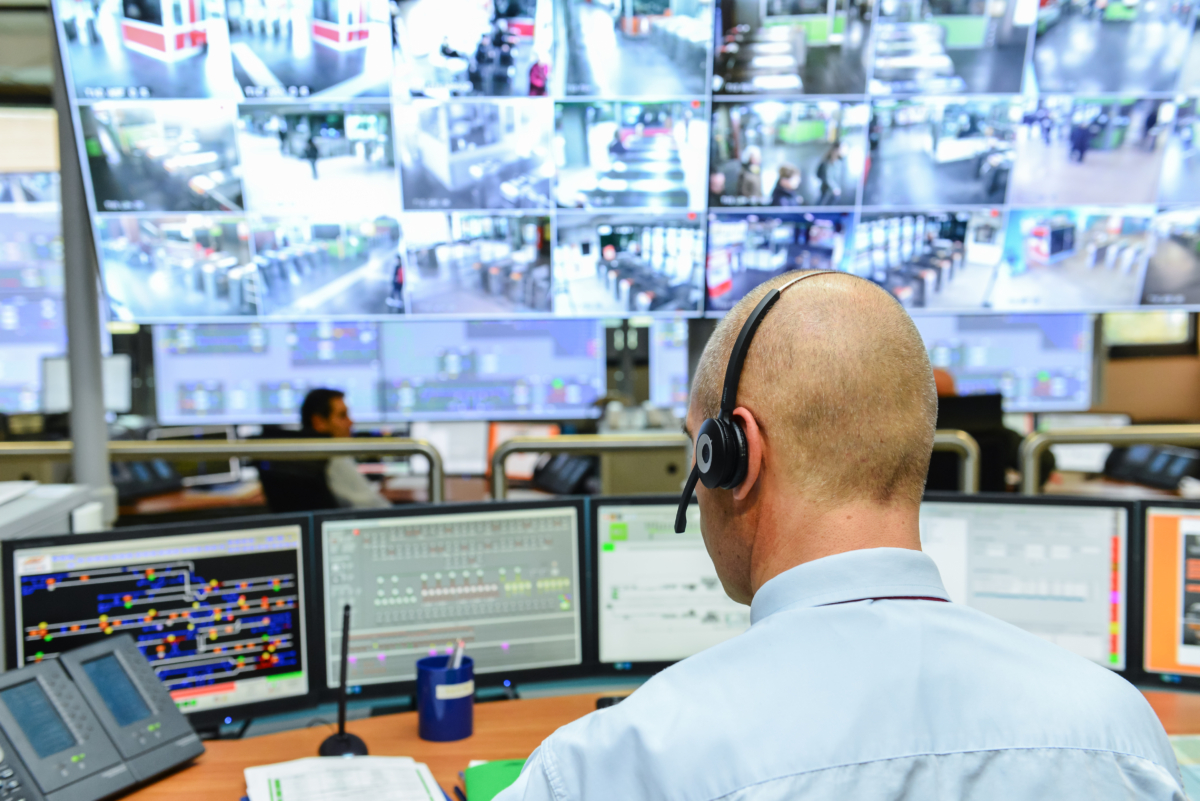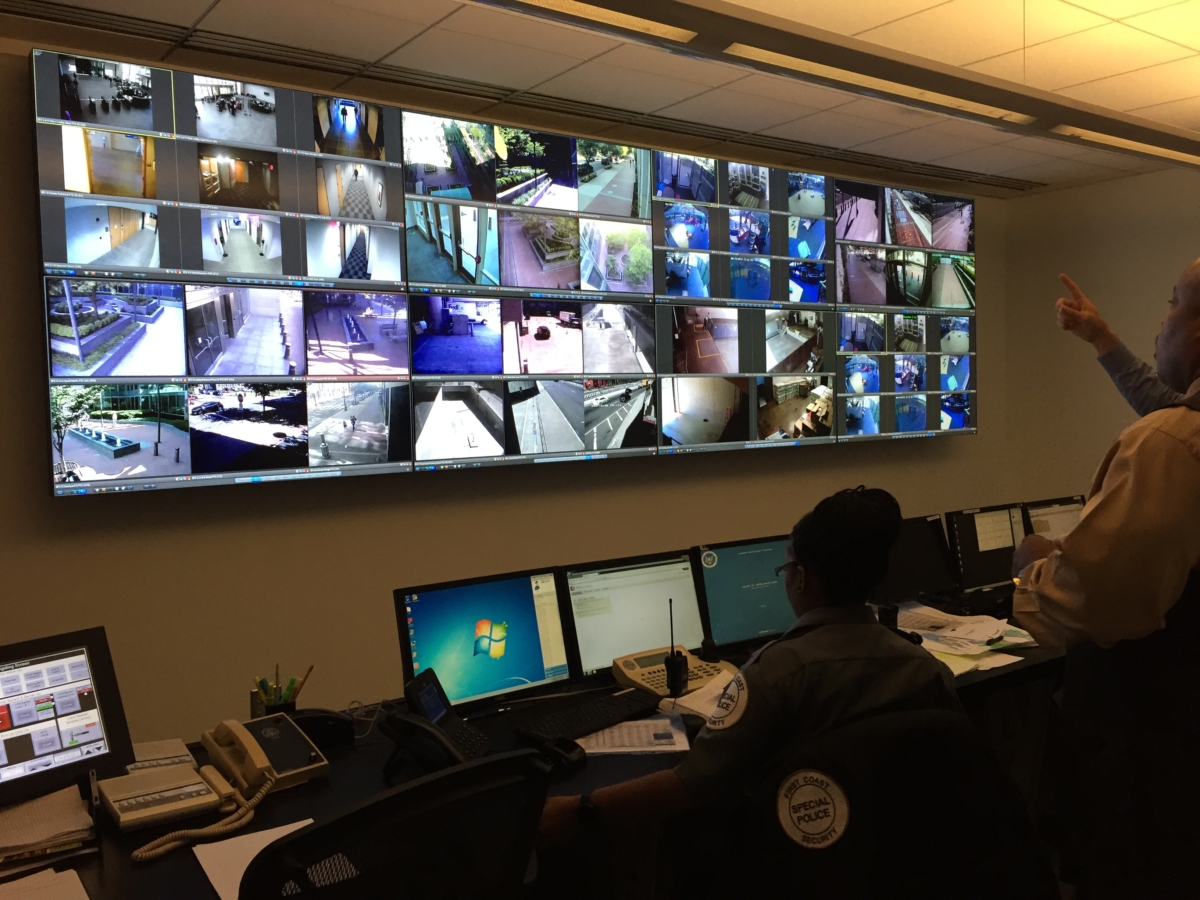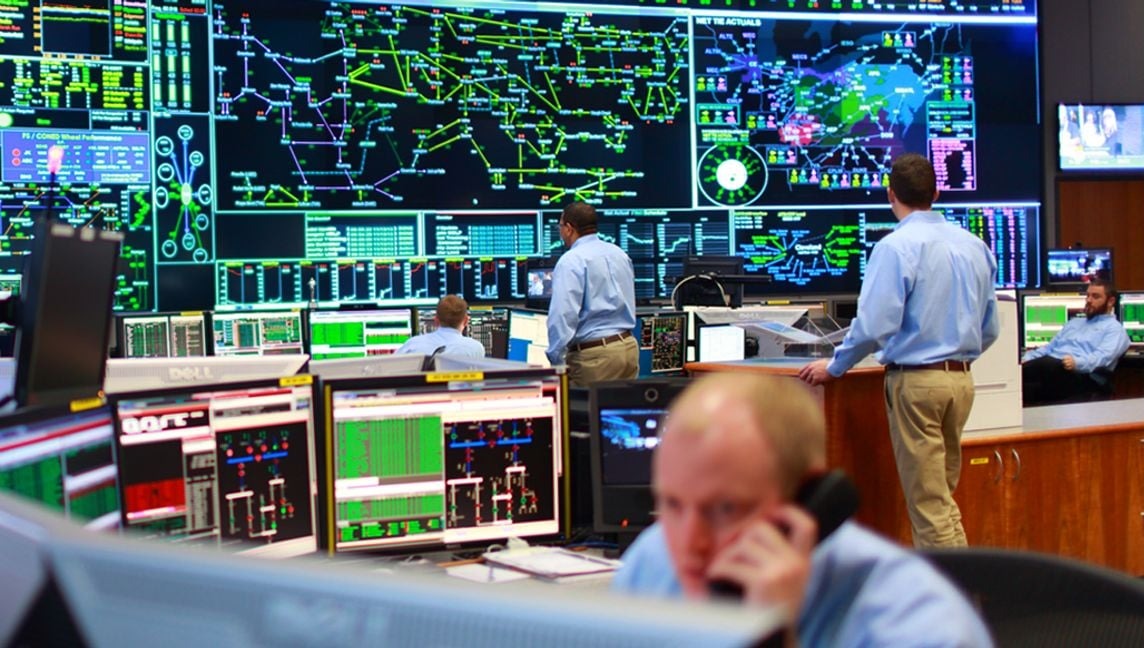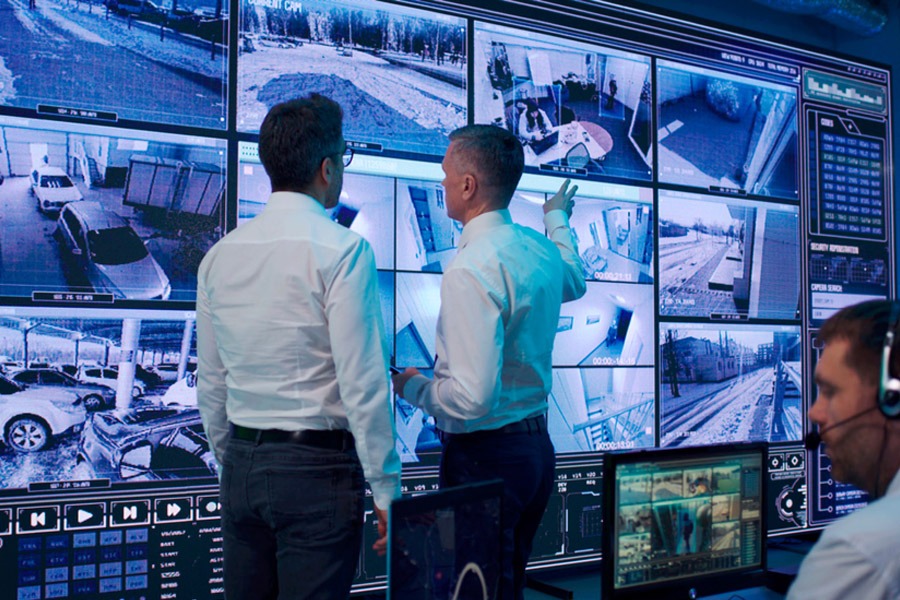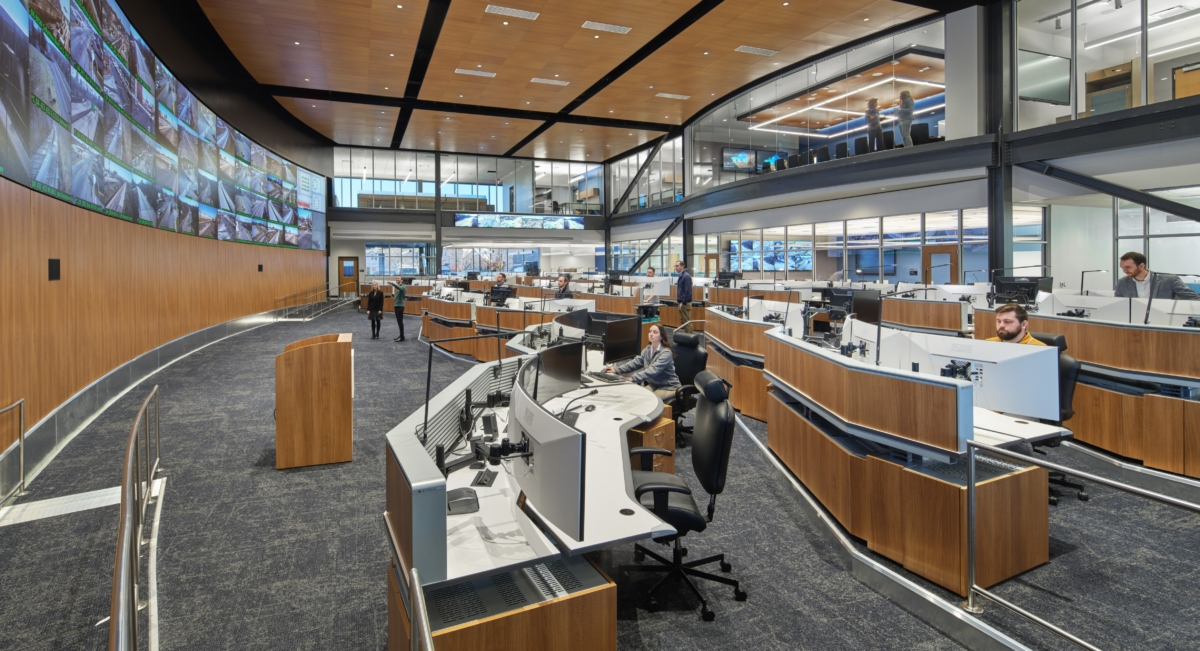
7 Steps to Help Simplify the Command Center Design Process
Intelligence-led operations continue to be the de facto model behind planning for and designing control room technology that will continue to adapt to meet today’s mounting demands and evolving threat landscape. That said, operators need the best of both worlds: highly capable and flexible technology that’s still easy to use and helps them maintain efficiency and avoid situational blindness, or being debilitated by too much irrelevant information.
Some might tell Operations Managers or IT Network Directors that implementing a fully-functional operations center that incorporates new and innovative technology requires complex integration. We beg to differ. Don’t be misled, it’s true that control room expansion or refurbishment that involves the alignment of enhanced technologies with more multifaceted operations can be best accomplished with a more involved, custom integration.
Yet, that’s not always the case—and more often than not, we come across command centers that can capitalize on avoiding the pitfalls of, really, just too much noise and design deliberation.
For small to medium control room environments, following these 7 easy steps will be your pathway to simplicity:
Step 1: Place an Emphasis on Operator Efficiency
Establishing a larger operations strategy and day-to-day procedures for a command center needs to take into account an operator’s capability of realistically managing the workload. The key here is to maximize efficiency. Too often, operators are burdened with technology that’s dispersed and counterproductive to their workflow, making real-time monitoring, control and incident management way more of a hassle than they need to be.
We’ll leave evaluating the scope of work to the consultants and control room operations experts; but in sum, a modern control room can leverage the latest technology built for mission-critical environments in ways that are cost effective, offer easy-to-use features and are specific to their use case.
Step 2: Select Mission-Critical Visualization
Command centers are high-stakes environments where monitoring, process control, emergency response, and a more intelligent security posture depend on the most reliable and purpose-built technology.
Ultra-high-resolution video walls and/or large format displays play a critical role in helping control room operators gather data, assess potential risks, and engage in proactive response. A single-pane-of-glass view of operations across your infrastructure is possible when the right visualization solution is identified according to the size of the space, the number of operators and the different types of data that need to be interpreted.
High performing, 24/7-rated video walls and displays with wide viewing angles will provide sharp visibility of content and the flexibility to display it in the most effective way. The result? Simplified viewing featuring the seamless assimilation of data, maps and a variety of detailed sources that are clear, crisp and create an overall more simplified workflow experience.
Step 3: Optimize Content & Display Configurations
New forms of data integration and an increased need for collaborative decision-making were catalyzed by the pandemic and ever-changing risk mitigation efforts. So, when control room operators and management refine strategic plans and make mission-critical resources accessible, there’s tremendous value in asking the question as it pertains to simplifying video wall and display design: what new information is required to comprise a day-to-day common operational picture?
From centralized dashboards to live streaming content to the dynamic display of video and other essential field and industrial data inputs, it’s important to optimize the presentation of that information and create configurations that align with what operators actually need to visualize.
Step 4: Utilize Compact & Cost-Effective Video Wall Processing
For command center environments where space and sound—or even aesthetics—are a premium—it’s important to choose a video processor that has a compact form factor and quiet performance but is still packed with power.
A smaller footprint doesn’t necessarily mean diminished capability—especially with some of the latest generations of processors and appliances that contain considerable engineering and OEM (Original Equipment Manufacturer) product design. These video controllers allow end-users to make optimized content and preferred display configurations a reality with the ability to integrate a number of video inputs and IP streams that can quickly and easily be delivered to a multi-screen display or video wall.
We’re talking flexibility in addition to a reliable and highly expandable solution. Even in some of the most demanding control room environments, a compact, yet high-performing video processor affords operators dynamic control of data and real-time information.
Step 5: Ensure Proper Console Layout
Comfort + good spatial design = productivity. Let’s break it down. Two of the best practices for ergonomic control room design are providing the benefits of sit/stand operator consoles and adjustable 24/7-rated chairs to keep operators comfortable, and therefore, more engaged and focused.
Equally important is the physical arrangement of the space, particularly lines of sight. When operating in a control room that has a centralized display, the ability to consistently and easily visualize the common operational picture is crucial for operators. It can look as simple as staggering consoles to allow for better lines of sight for operators, or choosing ergonomic furniture that allows you to adjust the size and height of the equipment. You’ll end up with better sightlines that reduce strain on operators and make information more easily accessible.
Step 6: Streamline Operator Workspaces
Simply put, effectiveness is tied to the operator workspace. Excess can lead to difficulty in completing even the simplest tasks or visualizing the right pieces of information. Decluttering the workspace includes limiting operators to a single keyboard and mouse so that operators are able to intuitively interact with any and all screens and dashboards.
It’s also a direct result of implementing a centralized video wall or display, meaning that the number of personal operator displays and PCs can be reduced, a significant benefit that helps alleviate situational blindness. Plus concentrating audio and communications for operators with a multi-purpose personal headset is not only an inexpensive option, but it also provides the capabilities to connect to a traditional phone, a softphone application, a cell phone, and even a video conference, offering flexibility that makes it a simplifying audio solution.
Step 7: Partner for Expert Support
Stability and reliability in system performance is a day-one requirement for most mission-critical technology deployments. As such, the right technology partner is one that provides expert service and remote support. Any planned or unplanned downtime can have a serious impact on critical control room functions; Service Level Agreements that meet your needs and include comprehensive remote system monitoring will guarantee continuity of operations—and add some much-deserved peace-of-mind.
Make Simplicity a Reality
Command and control with operators in mind means operations made simple and hassle free. Click here to learn more about the straightforward and intuitive control room technology solutions that CTI makes possible for your organization.
Talk to Us About Your Project
Too busy to chat right now?
Send us a message.

